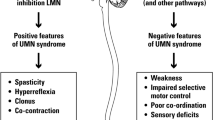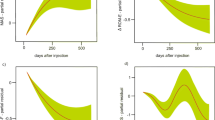Abstract
Objectives
In the last 2 decades, BTX-A is increasingly being used in the management of spasticity in children with Cerebral Palsy (CP) and there is no doubt about its effect on range of motion, spasticity reduction and gait pattern in this patient population. However, in daily practice, there is still an ongoing search for the best way to apply BTX-A. Two studies were set up to evaluate how successful an integrated multilevel treatment approach is in children with CP. The first study identifies crucial factors within the treatment strategy which may predict the outcome. The second study evaluates the efficacy of repeated BTX-A injections.
Methods
Patient selection was based on following criteria: diagnosis of CP, lower limb BTX-A treatment, age at time of treatment <24 years, no combined surgery at the time of BTX-A injections, 3D gait analysis and clinical evaluation pre and 2 months post BTX-A injections. The first study included the last treatment of 577 patients. In the second study, the first and last BTX-A treatment of 222 children were included. The Goal Attainment Scale (GAS) was used to evaluate the functional outcome of each treatment session.
Results
In the first study, the mean GAS score of the total group was 51.7 (±7.5). Considering a converted total score of 50 as cut-off score for successful treatment, 67.1 % of the treatments were successful. Significantly higher GAS scores were found in mildly involved children compared to more involved children (p < 0.0001) and for multilevel injections or injections in the distal muscle groups only compared to injections in the proximal muscles of the lower limb only (p < 0.0001). Other crucial factors for a successful outcome were amount of physical therapy per week (p=0.0026), post injection casting (p=0.005) and frequency of using day and night orthoses after injection (p < 0.0001). In the second study, the mean GAS score of the total group decreased from 54.8 (±6.8) at the first treatment to 50.7 (±6.9) at the last treatment, indicating that on average, repeated BTX-A treatment is successful.
Conclusion
The integrated multilevel BTX-A approach is successful in children with CP. Several factors might help the clinician to select patients that are most likely to benefit from the treatment, to assure the most optimal treatment strategy and to predict the outcome. Each treatment should be carefully planned and goals should be well chosen, because the effectiveness of the BTX-A treatment may decrease with increasing number of treatments in the same patient.


Similar content being viewed by others
References
Aoki KR (2003) Pharmacology and immunology of botulinum toxin type A. Clin Dermatol 21:476–480
Aoki KR, Ranoux D, Wissel J (2006) Using translational medicine to understand clinical differences between botulinum toxin formulations. Eur J Neurol 13:10–19
Schroeder AS, Ertl-Wagner B, Britsch S, Schröder JM, Nikolin S, Weis J, Müller-Felber W, Koerte I, Stehr M, Berweck S, Borggraefe I, Heinen F (2009) Muscle biopsy substantiates long-term MRI alterations one year after a single dose of botulinum toxin injected into the lateral gastrocnemius muscle of healthy volunteers. Mov Disord 24(10):1494–1503
Cans C (2000) Surveillance of cerebral palsy in Europe: a collaboration of cerebral palsy surveys and registers. Dev Med Child Neurol 42:816–824
Reid SM, Carlin JB, Reddihough DS (2010) Distribution of motor types in cerebral palsy: how do registry data compare? Dev Med Child Neurol 53(3):233–238
Molenaers G, Van Campenhout A, Fagard K, De Cat J, Desloovere K (2010) The use of botulinum toxin A in children with cerebral palsy, with a focus on the lower limb. J Child Orthop 4(3):183–195
Lee J, Sung I, Yoo J, Park E, Park S (2009) Effects of different dilutions of botulinum toxin type A treatment for children with cerebral palsy with spastic ankle plantar flexor: a randomized control trial. J Rehab Med 41:740–745
Lukban M, Rosales R, Dressler D (2009) Effectiveness of botulinum toxin A for upper and lower limb spasticity children with cerebral palsy: a summary of evidence. J Neural Transm 116:319–331
Bjornson K, Hays R, Graubert C, Price R, Won F, McLaughlin JF, Cohen M (2007) Botulinum toxin for spasticity in children with cerebral palsy: a comprehensive evaluation. Pediatrics 120(1):49–58
Desloovere K, Molenaers G, De Cat J, Pauwels P, Van Campenhout A, Ortibus E, Fabry G, De Cock P (2007) Motor function following multilevel botulinum toxin type A treatment in children with cerebral palsy. Dev Med Child Neurol 49(1):56–61
Scholtes V, Dallmeijer A, Knol D, Speth LA, Maathuis CG, Jongerius PH, Becher JG (2007) Effect of multilevel botulinum toxin A and comprehensive rehabilitation on gait in cerebral palsy. Pediatr Neurol 36(1):30–39
Desloovere K, Molenaers G, Feys H, Huenaerts C, Callewaert B, Van de Walle P (2006) Do dynamic and static clinical measurements correlate with gait analysis parameters in children with cerebral palsy? Gait Posture 24(3):302–13
Heinen F, Desloovere K, Schroeder AS, Berweck S, Borggraefe I, van Campenhout A, Andersen GL, Aydin R, Becher JG, Bernert G, Caballero IM, Carr L, Valayer EC, Desiato MT, Fairhurst C, Filipetti P, Hassink RI, Hustedt U, Jozwiak M, Kocer SI, Kolanowski E, Krägeloh-Mann I, Kutlay S, Mäenpää H, Mall V, McArthur P, Morel E, Papavassiliou A, PascualPascual I, Pedersen SA, Plasschaert FS, Van der Ploeg I, Remy-Neris O, Renders A, Di Rosa G, Steinlin M, Tedroff K, Valls JV, Viehweger E, Molenaers G (2010) The updated European Consensus 2009 on the use of botulinum toxin for children with cerebral palsy. Eur J Paediatr Neurol 14:45–66
Childers MK (1997) Rationale for localized injection of botulinum toxin type A in spasticity. Eur J Neurol 4:S37–S40
Childers M (2004) Targeting the neuromuscular junction in skeletal muscles. Am J Phys Med Rehabil 83:S38–S44
Van Campenhout A, Molenaers G (2010) Localization of the motor endplate zone in human skeletal muscles of the lower limb: anatomical guidelines for injection with botulinum toxin. Dev Med Child Neurol 53(2):108–119
Desloovere K, Schörkhuber V, Fagard K, Van Campenhout A, De Cat J, Pauwels P, Ortibus E, De Cock P, Molenaers G (2012) Botulinum toxin type A treatment in children with cerebral palsy: evaluation of treatment success or failure by means of goal attainment scaling. Eur J Paediatr Neurol 16(3):229–236
Author information
Authors and Affiliations
Corresponding author
About this article
Cite this article
Molenaers, G., Fagard, K., Van Campenhout, A. et al. Botulinum toxin A treatment of the lower extremities in children with cerebral palsy. J Child Orthop 7, 383–387 (2013). https://doi.org/10.1007/s11832-013-0511-x
Received:
Accepted:
Published:
Issue Date:
DOI: https://doi.org/10.1007/s11832-013-0511-x




